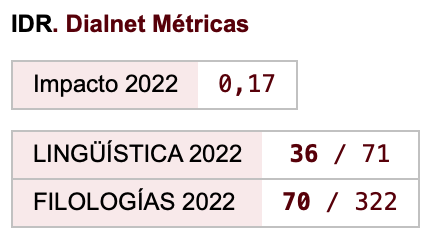The Third Language in English Guidebooks and its Translation into Spanish
Keywords:
translation, tourist texts, guidebooks, third language, transference strategies, contrastive analysis, discourseAbstract
This article focuses on a specific feature found in tourist guidebooks –the recurrent use of foreign expressions or “third language”. It presents the findings of a comparative analysis of a parallel corpus made up of twenty guidebooks: ten guidebooks originally written in English and their corresponding translated versions in Spanish, describing different countries and cities (all of them published by Lonely Planet), focusing on those chapters in which the writer includes practical information. The purpose of the study is to analyze the use of the third language in the English and Spanish versions and to determine and identify the translation strategies used by the translators to transfer these linguistic elements from one language to the other. To this aim, a classification of transference strategies is presented, as well as a brief review of the most influential authors who have contributed to this field of study. The results will show the translation tendency regarding the translation of foreign expressions.
DOI: 10.1400/229695
Downloads
References
Bell, R. T. (1998). Psychological/cognitive approaches. In M. Baker (Ed.), Routledge encyclopedia of translation studies (pp. 185-190). London & New York, LDN & NY: Routledge.
Chesterman, A. (1997). Memes of translation. Amsterdam & Philadelphia, AMS & PA: John Benjamins.
Corrius Gimbert, M. (2005). The Third Language: A Recurrent Textual Restriction In Audiovisual Translation. Cadernos de tradução, XVI, 147-160.
Gross, R. (1998). El texto turístico para alumnos no nativos: razón o sinrazón del empeño didáctico en traducción inversa castellano-alemán. European Society for translation studies. Granada, GR: University of Granada.
Hurtado, A. (2001). Traducción y traductología. Madrid, MAD: Cátedra.
Jaaskelainen, R. (1999). Tapping the Process: an Explorative Study of Cognitive and Effective Factors Involved in Translating. Joensuu, UJOE: University of Joensuu Publications in Humanities.
Jenkins, C. L. & Lickorish, L. J. (1997). Una introducción al turismo. Madrid, MAD: Síntesis.
Kelly, D. (1998). The translation of texts from the tourist sector: textual conventions, cultural distance and other constraints. TRANS, 2, 33-42.
Klaudy, K. (2003). Languages in Translation. Lectures on the theory, teaching and practice of translation. Budapest, BP: Scholastica.
Krings, H. P. (1986). Was in den Köpfen von Übersetzern vorgeht. Eine empirische Untersuchung der Struktur des Übersetzungsprozesses an fortgeschrittenen Französischlernern. Tübingen: Narr.
Lörscher, W. (1991). Translation performance, translation process and translation strategies, a psycholinguistic investigation. Tübingen, DE: Gunter Narr Verlag.
Martínez Motos, R. (2005). Análisis comparativo de las convenciones textuales de textos turísticos en inglés y en español: los folletos editados por organismos oficiales. In Fuentes Luque, A. (Ed.), La traducción en el sector turístico (pp. 121-138). Granada, GR: Atrio.
Newmark, P. (1988). A Textbook of Translation. London, LDN: Prentice Hall International.
Nobs, M. L. (1996). Reflexiones sobre la problemática específica de la traducción de textos procedentes del campo del turismo. In Iniesta, E. (Ed.), Perspectivas hispanas y rusas sobre traducción. Actas del II Seminario Hispano-Ruso de Estudios de Traducción, Universidad de Granada, 3-6 de abril de 1995 (pp. 239-253). Granada, GR: University of Granada.
Santamaría Urbieta, A. (2014). La traducción de las guías de viaje (inglés- español): análisis contrastivo de la información práctica. Unpublished Thesis. Las Palmas de Gran Canaria, LPGC: University of Las Palmas de Gran Canaria.
Séguinot, C. (1991). A study of student translation strategies. In Tirkkonen- Condit (Ed.), Empirical research in translation and intercultural studies (pp. 79-88). Tübingen, DE: Gunter Narr Verlag.
Venuti, L. (1998). Strategies of translation. In M. Baker (Ed.), Encyclopedia of translation studies (pp. 240-244). London & New York, LDN & NY: Routledge.
Vinay, J. P. & Darbelnet, J. (1977). Stylistique comparée du français et de l’anglais. Paris, PAR: Didier.
World Tourism Organization. Understanding Tourism: Basic Glossary. Retrieved July 4, 2014, from <http://media.unwto.org/en/content/understanding- tourism-basic-glossary>.
Zabalbeascoa, P. (2000). From techniques to types of solutions. In Beeby, A., Ensinger, D. & Presas, M. (Eds.), Investigating translation (pp. 117-127). Amsterdam-Philadelphia, AMS-PA: John Benjamins.
Downloads
Published
How to Cite
Issue
Section
License
Authors who publish with this journal agree to the following terms:
- Authors retain copyright and grant the journal right of first publication with the work simultaneously licensed under a Creative Commons Attribution License that allows others to share the work with an acknowledgement of the work's authorship and initial publication in this journal.
- Authors are able to enter into separate, additional contractual arrangements for the non-exclusive distribution of the journal's published version of the work (e.g., post it to an institutional repository or publish it in a book), with an acknowledgement of its initial publication in this journal.
- Authors are permitted and encouraged to post their work online (e.g., in institutional repositories or on their website) prior to and during the submission process, as it can lead to productive exchanges, as well as earlier and greater citation of published work (See The Effect of Open Access).

Revista de Lenguas para fines específicos is licensed under a Creative Commons Reconocimiento-NoComercial-SinObraDerivada 4.0 Internacional License.























